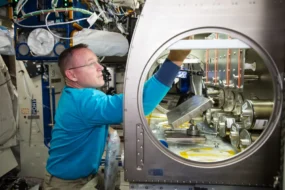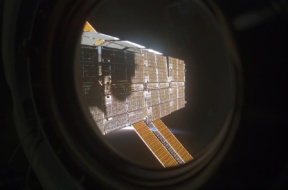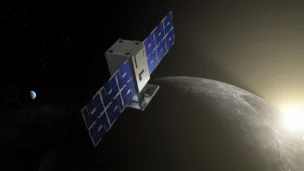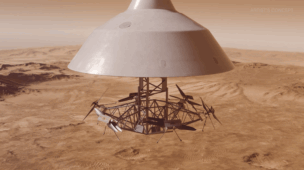Icarus’ wings got a makeover. NASA’s Parker solar probe, made out of carbon composite rather than wax, passed the Alfvén critical boundary marking the edge of the Sun’s corona in April, NASA announced this week. The probe is three years into a seven-year mission to collect data on the corona that we can’t understand from the outside looking in.
Parker: The probe itself is a ~635kg, ~9.8 x 3.3-foot craft with a 4.5-inch thick barrier called the Thermal Protection System built in to protect its scientific instruments from the intense, ~2,500°F heat of the solar surface.
The instruments in question fall into four categories:
- FIELDS, which measures data on the size and shape of electric and magnetic fields;
- WISPR (Wide-Field Imager for Parker Solar Probe), which records imagery (including a recent video of the view from the sun);
- SWEAP (Solar Wind Electrons Alphas and Protons Investigation), a system including a solar probe cup and analyzers that quantifies and measure the velocity, density, and temperature of electrons, protons, and helium ions; and
- IS☉IS (Integrated Science Investigation of the Sun), which has the symbol for the sun included in its acronym and observes the life cycles of the particles found in the corona.
Why probe the surface? Despite the sun’s importance in our lives, there’s a lot we don’t know about it. Until NASA’s solar probe crossed the Alfvén critical boundary, the line separating the corona from the less-dense solar winds, scientists weren’t even totally sure where it was. The answer: ~8.1M miles from the solar surface.
And that’s only scratching the surface (no pun intended) of what scientists have yet to discover about the sun. Parker’s data has already helped NASA to identify structures in the solar wind and trace them back to their origins at the solar surface, and to observe what it’s like inside huge solar structures called pseudostreamers that can be seen from Earth during eclipses.
Up next: There are still four years’ worth of flybys, each closer than the last, for scientists to discover more about the structures on the sun and how they affect us and the rest of our solar system. When all is said and done, Parker will have orbited the sun 24 times, using Venus’ gravity to catapult itself closer and closer to the surface—3.83M miles from the solar surface at its nearest.




